Largest Church Mosaic in Croatia Unveiled in Karlovac
November 13, 2021 – After many years of preparation and effort, the largest church mosaic in Croatia has been revealed to parishioners at the Church of Saint Joseph (Crkva sv. Josip) in Karlovac
The beautiful mosaic covers an incredible 120 square metres of wall behind the church's altar. Depicted in the mosaic is the birth of Jesus Christ.
The mosaic is the work of renowned Croatian artist Josip Botteri Dini who is based in Split. On 1st January 2021, Mr Josip Botteri Dini and several assistants began stacking coloured glass pieces into one-square-metre templates to construct the work.
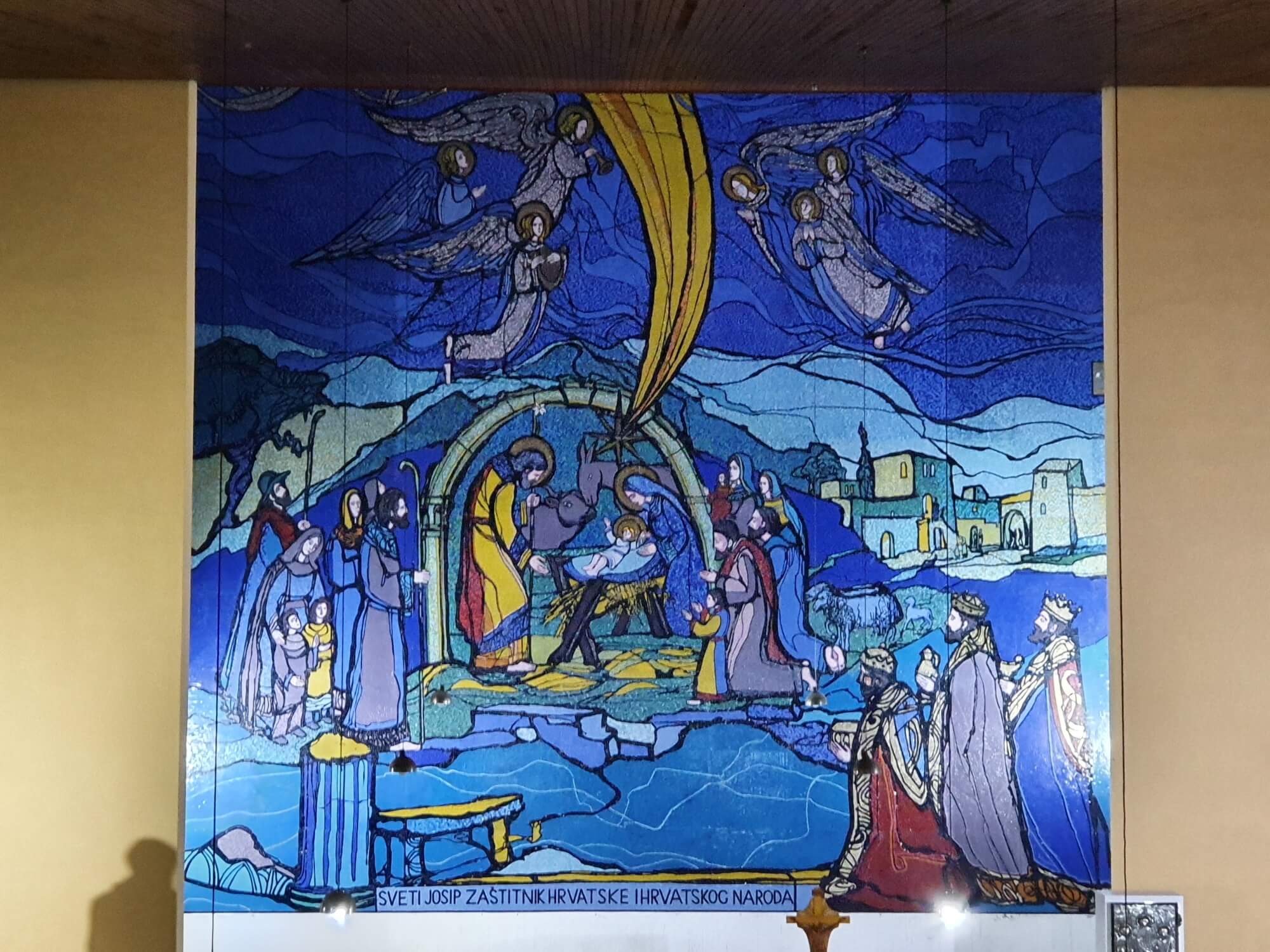 Largest Church Mosaic in Croatia © Marina Buric / Visit Karlovac
Largest Church Mosaic in Croatia © Marina Buric / Visit Karlovac
Each template contains around 2500 mosaic parts. In total, the mosaic has around half a million pieces of coloured glass. It took Mr. Botteri Dini nine months to finish stacking 168 templates. After completing that long section of the task in Split, he then travelled to Karlovac and continued working there. The installation of the templates onto the wall took two weeks. Subsequently, six weeks of cleaning and aligning of the mosaic followed.
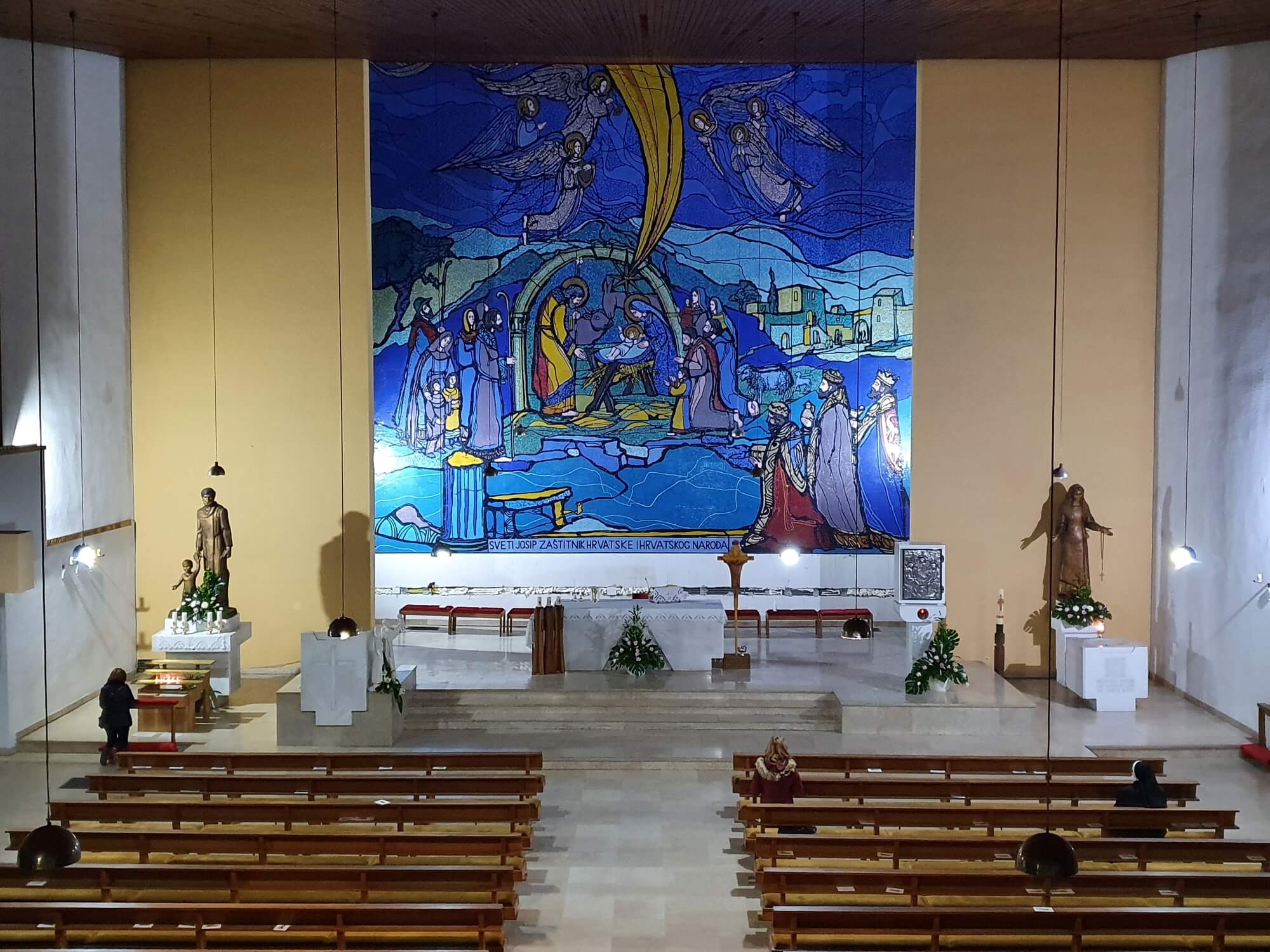 From the rear of St. Josip's Church © Marina Buric / Visit Karlovac
From the rear of St. Josip's Church © Marina Buric / Visit Karlovac
Josip Botteri Dini, the artist behind the largest church mosaic in Croatia
Although he now lives and works in Split, Josip Botteri Dini was actually born in Zagreb in 1943. He studied at the city's Academy of Fine Arts, notably in the class of famous Varaždin painter and graphic artist Miljenko Stančić. Josip graduated in 1968. Since the early 1970s, the work of Josip Botteri Dini has been exhibited over a hundred times throughout Croatia and overseas. In addition to painting, he works with mosaics and stained glass.
 In detail, Croatia's largest church mosaic, in St. Josip's, Karlovac © Marina Buric / Visit Karlovac
In detail, Croatia's largest church mosaic, in St. Josip's, Karlovac © Marina Buric / Visit Karlovac
Being the largest Church mosaic in Croatia, it was necessary to construct a 13-metre high scaffold for the work to be set on the church wall. Although Mr. Botteri Dini is now 78 years old, he climbed the scaffold every day to finish his work, helped by his brothers Juraj and Dezi. They are also in their seventies.
 Nacionalno svetište svetog Josipa (National Shrine of St. Joseph) in Dubovac, Karlovac
Nacionalno svetište svetog Josipa (National Shrine of St. Joseph) in Dubovac, Karlovac
Nacionalno svetište svetog Josipa (National Shrine of St. Joseph) in Dubovac, Karlovac
Otherwise known as Nacionalno svetište svetog Josipa (National Shrine of St. Joseph), the modern Church of Saint Joseph lies to the west of Karlovac city centre in Dubovac. In fact, it sits at the foot of the hill on which is placed the 13th-century castle fortress Old Town of Dubovac, from where the settlement gets its name.
Construction of the Church of St. Josip started in 1968 but its external facades were not completed until 1972. In 1975 its bell tower was built although it would take until 1980 for three new bells to be placed within it. In 1987, the church was dedicated as a national shrine for Saint Joseph, marking the 300th anniversary of Saint Joseph being assigned as Protector of the Homeland and the Croatian people. Saint Joseph is also the patron saint of Karlovac.
The largest Church mosaic in Croatia is not the only masterpiece to be found in the Church of St. Josip. Within the building is the permanent exhibition space Galeriji 'Martin Borković'. It contains works of art by 28 eminent Croatian painters and sculptors. You can see them every day after Holy Mass.
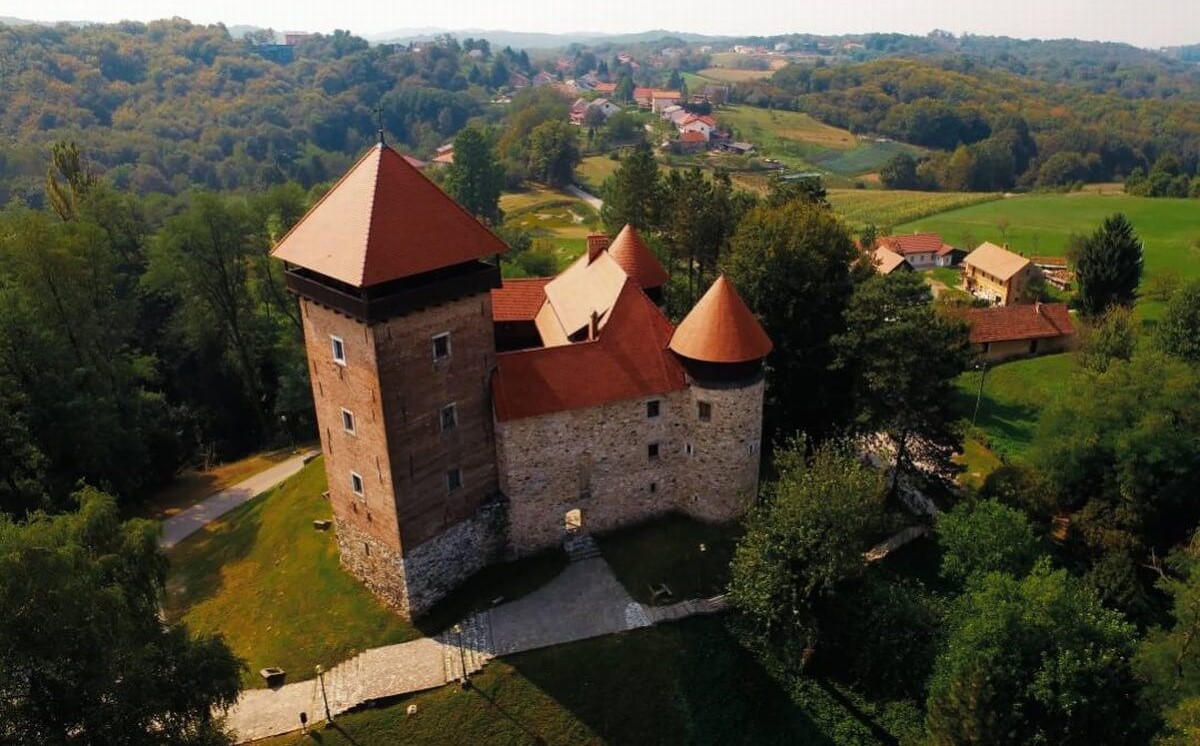 The Old Town of Dubovac © Ivo Biočina
The Old Town of Dubovac © Ivo Biočina
The Old Town of Dubovac is one of the best-preserved buildings of its kind in Croatia. A popular tourist attraction, it hosts events and has one of the city's best restaurants on the ground floor of its atmospheric courtyard. With the addition of the largest Church mosaic in Croatia, visitors now have another excellent reason to stop off in the quiet Karlovac suburb of Dubovac.
You can read more about Karlovac in the Total Croatia guide to the city here. For the latest news about Karlovac, be sure to check Total Croatia News tagged pages here
Karlovac Beer Days Kicks Off Its 34th Edition: 5 Days of Music and Stage Spectacles
August 28, 2021 - The largest beer festival in Croatia, the Karlovac Beer Days, lasts until August 31, and 12 famous local musicians and bands will take turns on the stage for five days. In addition to a five-day music and stage spectacle, Beer Days also offer a rich program of additional activities.
A spectacular laser show, a virtuoso performance by the dance group Atomic Dance Factory and institutions of the domestic music scene, Massimo and Zabranjeno pušenje, marked the first day of the 34th edition of the Karlovac Beer Days, reports Turističke Priče. The exciting opening of this year's Beer Days hinted that another unforgettable festival awaits the people of Karlovac and their visitors.
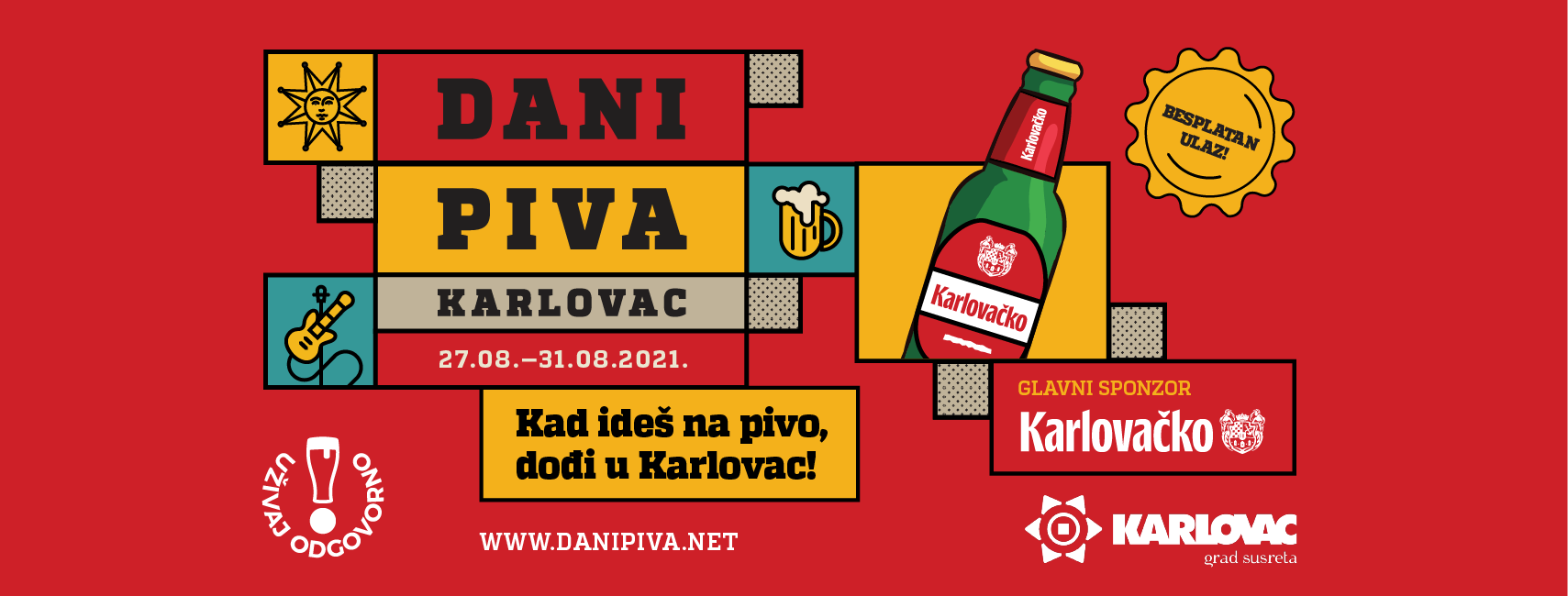
With the opening of Karlovac Beer Days, the city has become a dynamic stage where the main roles are played by beer lovers, the best local musicians, and an excellent tourist and gastronomic offer. The exciting first day of one of the most anticipated domestic beer festivals was rounded off by a kind of rock music institution: No Smoking.
By performing in front of the Karlovac audience, this energetic band proved why it has been pushing the musical boundaries in the region for more than 40 years, and Z ++, Nipplepeople, Vojko V, Tight Grips, Silente, Goran Bare & Majke, Natali Dizdar, TBF, Detour, and Željko Bebek will dance with the audience from the stage during the festival. In addition to performances by well-known local performers, visitors can expect additional activities that begin in the morning.

Dani piva Karlovac (Facebook)
At the Karlovac Beer Days, it is necessary to show the EU digital COVID certificate only in the immediate vicinity of the stage. Visitors who will follow the program outside the enclosure where they are not required to have an EU digital certificate, but should comply with the prescribed epidemiological measures. For visitors who do not own it, the city of Karlovac organized a quick antigen test at a price of 100 kuna.
For everything you need to know about Karlovac, visit Total Croatia's complete guide HERE.
For more on lifestyle in Croatia, follow TCN's dedicated page.
Discovering the Hidden Gems of Karlovac
May 23, 2021 - TCN contributor Ana Bacic looks at the hidden gems of Karlovac.
On the way to the coast, one must pass Karlovac, which is located just 49 km (31 miles) southeast of Zagreb.
The old historic city built in 1579 was surrounded by a large, fortified wall in the shape of a six-pointed star. The fortification of the city was founded by Habsburg’s archduke Karl II. Thus, its name: Karlo-vac. Its massive walls served as a military outpost during the war against the Ottoman Empire. Over the centuries, the city streets and buildings spilled over the fortress, and the city became the center of trade routes and guilds, mostly in the 18th and 19th centuries. At the beginning of the 20th century, the peak of its prosperity was when Karlovac was the third-largest city in what was formerly Croatian territory. The only two larger cities at the time were Zagreb and Osijek (the City of Rijeka belonged to Italy).
Since Karlovac was built during the Renaissance, its design fits in well with Thomas More’s social philosophy of a Utopian society. The Utopian concept requires geometrical harmony in the design of public spaces. If the living space is protected from harm and offered esthetic beauty and comfort, the inhabitants will be healthy, successful, and content. Think of it as being the Renaissance’s idea of Feng Shui. The rivers Kupa, Korana, Mrežnica, and Dobra meander through lush green spaces in this pedestrian-friendly city. The four rivers offer an additional flair to the town known for its parks and alleys. For anyone arriving from the hustle and bustle, Karlovac will be a healing experience of meeting nature right at the heart of the city.
The city has historically always been a meeting point of people and trade routes. One can easily reach Karlovac today by train, bus, or car. Old historic roads such as Karolina, Josephina, Louisiana that go through town also lead straight to the Adriatic sea. The oldest standing building in Karlovac dates back to the 17th century and is now an active museum. The Karlovac museum has various exhibits that explain the city’s Renaissance, Baroque, Napoleonic characteristics, and more. Unfortunately, the city's original architecture has not been preserved due to the destructive fires it has endured in the past. Between constant floods and fires, the new city emerged with wider alleyways between wooden buildings and more green spaces.
Interestingly, Karlovac is one of the first cities in Croatia with electricity generated through the hydroelectric dam (1908) on the river of Kupa by the town of Ozalj. The dam was used to power the local factories in Karlovac. Surprisingly, Nikola Tesla attended Karlovac Grammar School, which he completed in 3 years, and he became world-famous for his electrical discoveries. In his autobiographical accounts, Tesla reminisces about the stimulating influences of his professor of physics at Karlovac Grammar School, who exerted a lasting influence on him. Visitors can visit Tesla HotSpot in front of the school he attended, at the site of Nikola Tesla Experience Centre. The Centre is now under construction, opening to commence in September. The tourist story about Tesla and his years spent in Karlovac is still evolving; however, the fact that Karlovac Grammar School diploma remains the only diploma Tesla earned. Tesla’s enthusiasts can find inspiration at the same place where his scientific interests were sparked for the first time.
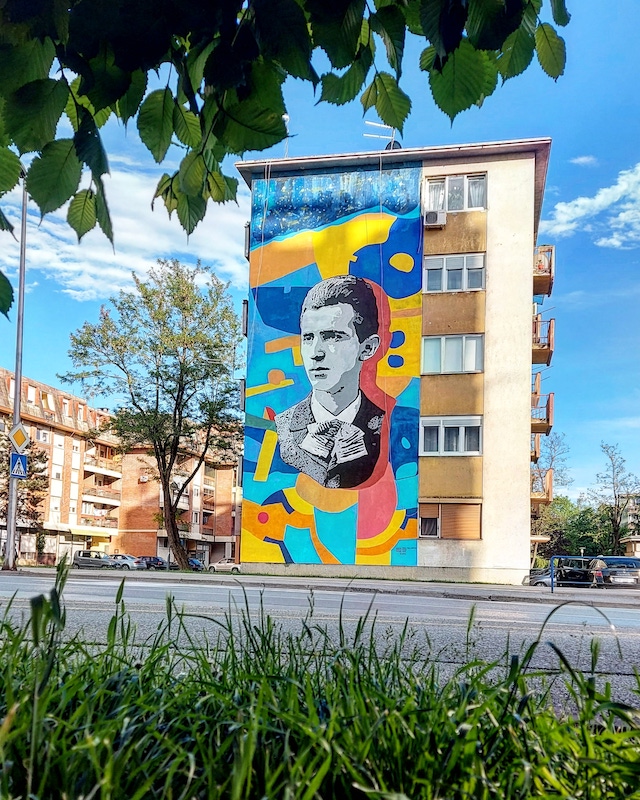
Vilim Stojkovic
The tradition of inventions and famous locals in Karlovac did not stop with Nikola Tesla leaving town. Marko Markovic, a civil engineer, and local patriot, designed the unique watch that is a replica of the 6-pointed star of the city fortress.

Marko Markovic
Besides historical sites and nature, there is the new city’s attraction Aquatica aquarium, the freshwater aquarium, where visitors can dive into the fish world and get to know the Karlovac rivers from a new perspective.
One of the oldest Beer Festivals in Croatia, “Dani Piva,” takes place in Karlovac every year in the late summer. It is an annual festivity centered around beer tasting, drinking, and gastronomy that attracts many visitors. Usually, one can choose from a range of different beers, domestic or foreign, as there are many international beer companies represented. Coupled with live entertainment Beer Festival is a highlight of summer in Karlovac.
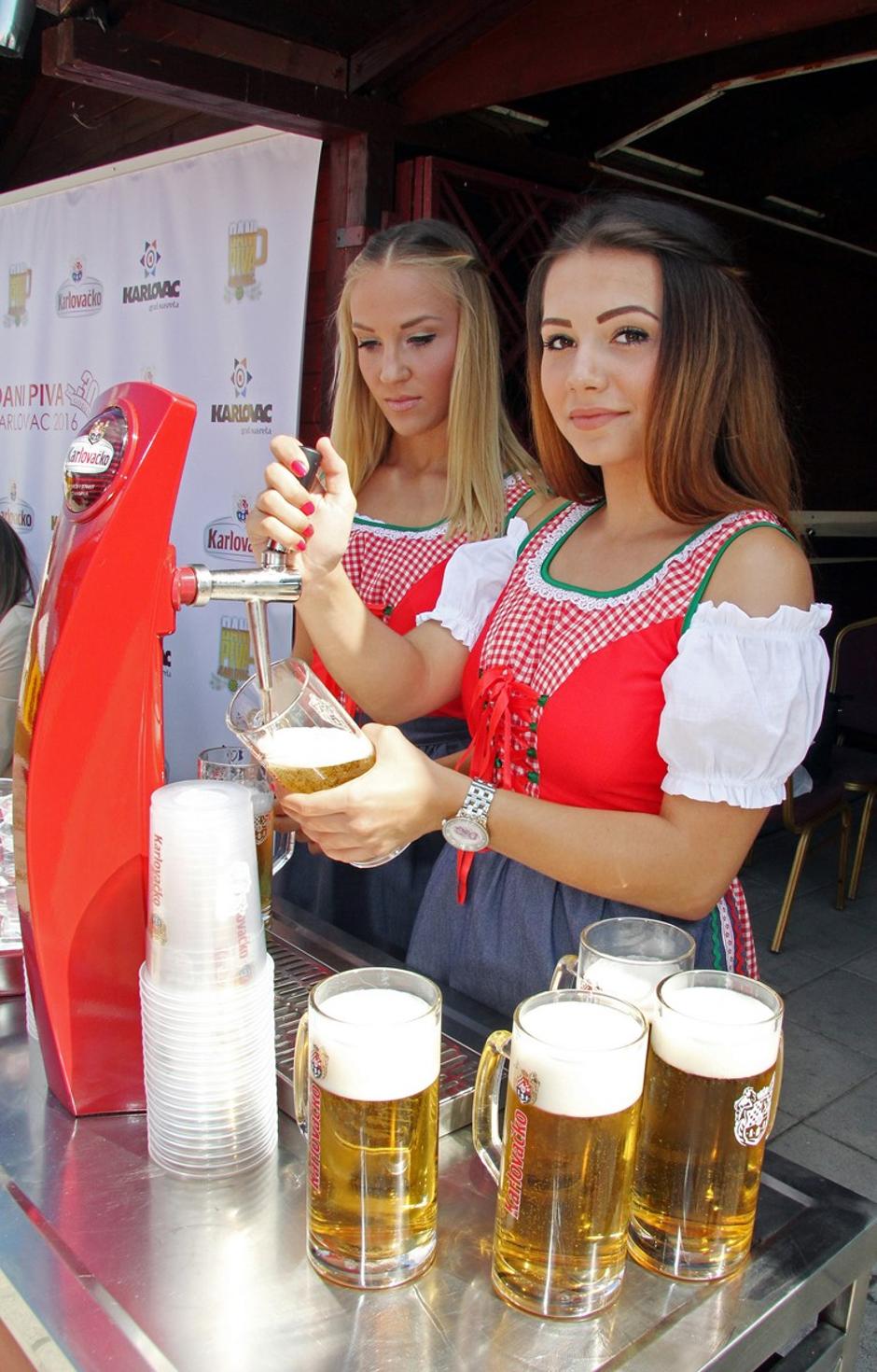
Vilim Stojkovic
Finally, one of the old attractions that cannot be missed is the 13th-century Dubovac Castle, where tourists can enjoy the views of the city and a little break in the restaurant within the castle’s walls.
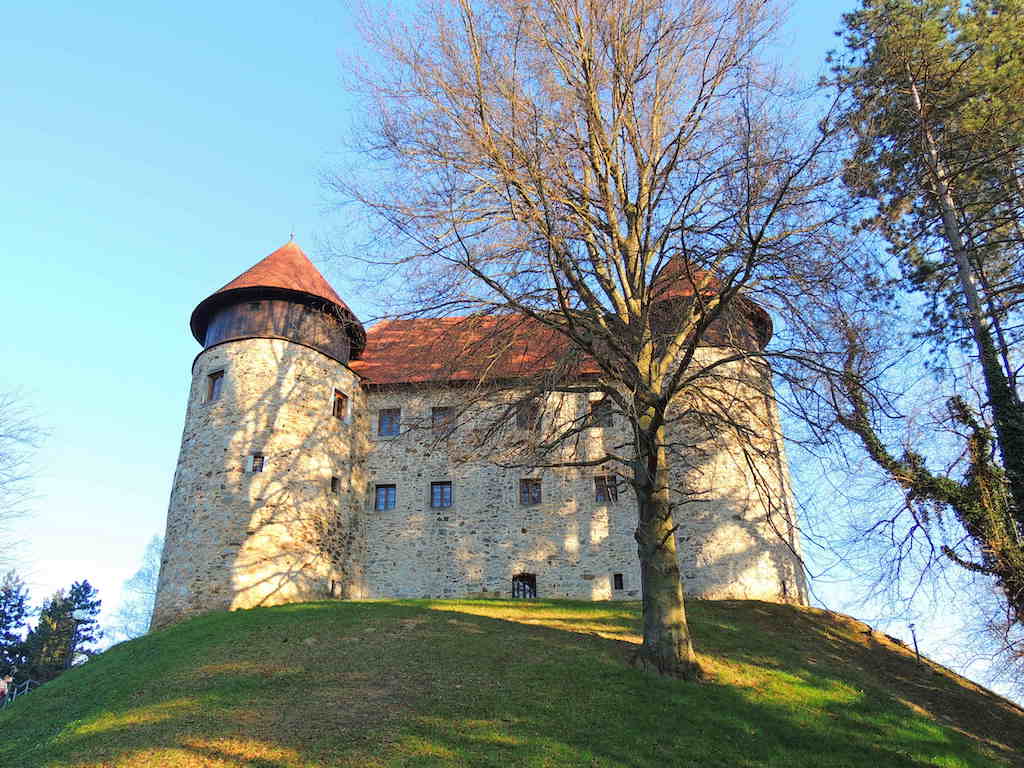
Vilim Stojkovic
I also suggest a visit to the War Museum on the outskirts of town, the very site of terrible bombings and shelling in Homeland war in the 90s.

Vilim Stojkovic
If you’re passing by in summer, locals recommend an unusual experience – swimming in all the four rivers in just one day, but in two locations only – at the confluence of the Dobra and Kupa and the confluence of the Mrežnica and Korana. The rivers meet and intersect in the city. Memorable experience! On occasion, the city is still flooded because 4 rivers have a mind of their own.
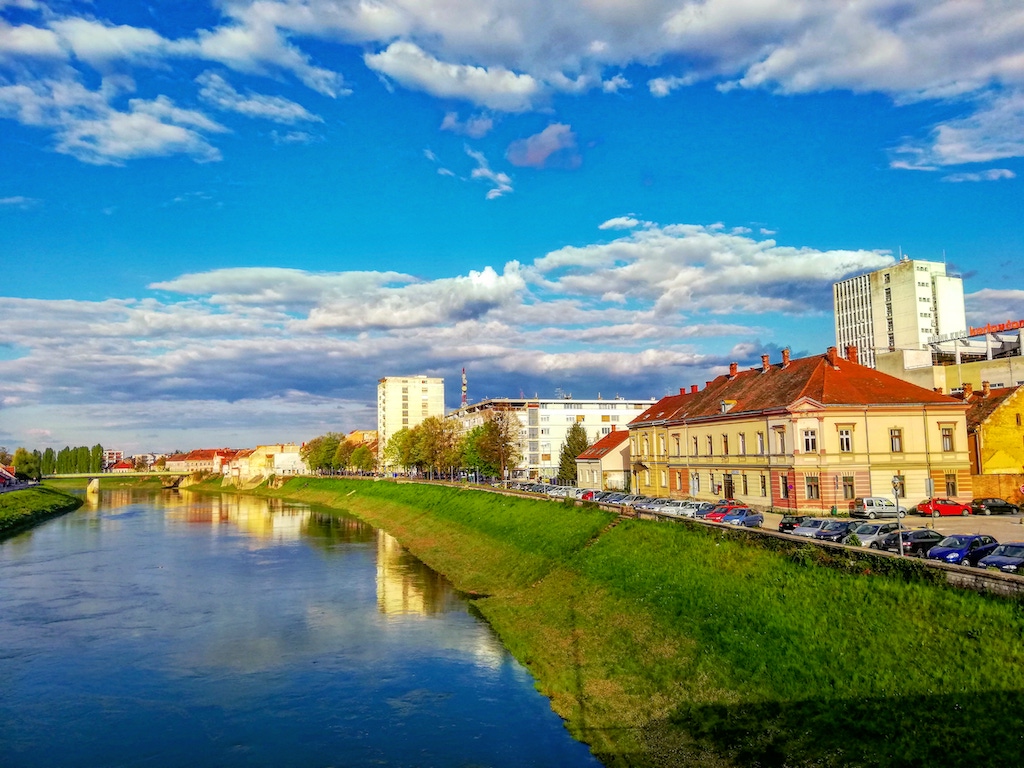
Vilim Stojkovic

Vilim Stojkovic
The city has charming cafes and restaurants. Besides authentic cuisine that features plenty of fresh fish on the menu, food enthusiasts may discover new, interesting flavours. Those who decide to hang out in Karlovac can easily spend 2-3 days in museums, rivers, attractions, etc. Many have used Karlovac only as a pit stop on the way back to their destination. Boutique Hotel Korana Srakovčić and Hotel Carlstad, where you can spend a night before catching a flight at the Zagreb Airport, are less than an hour away.
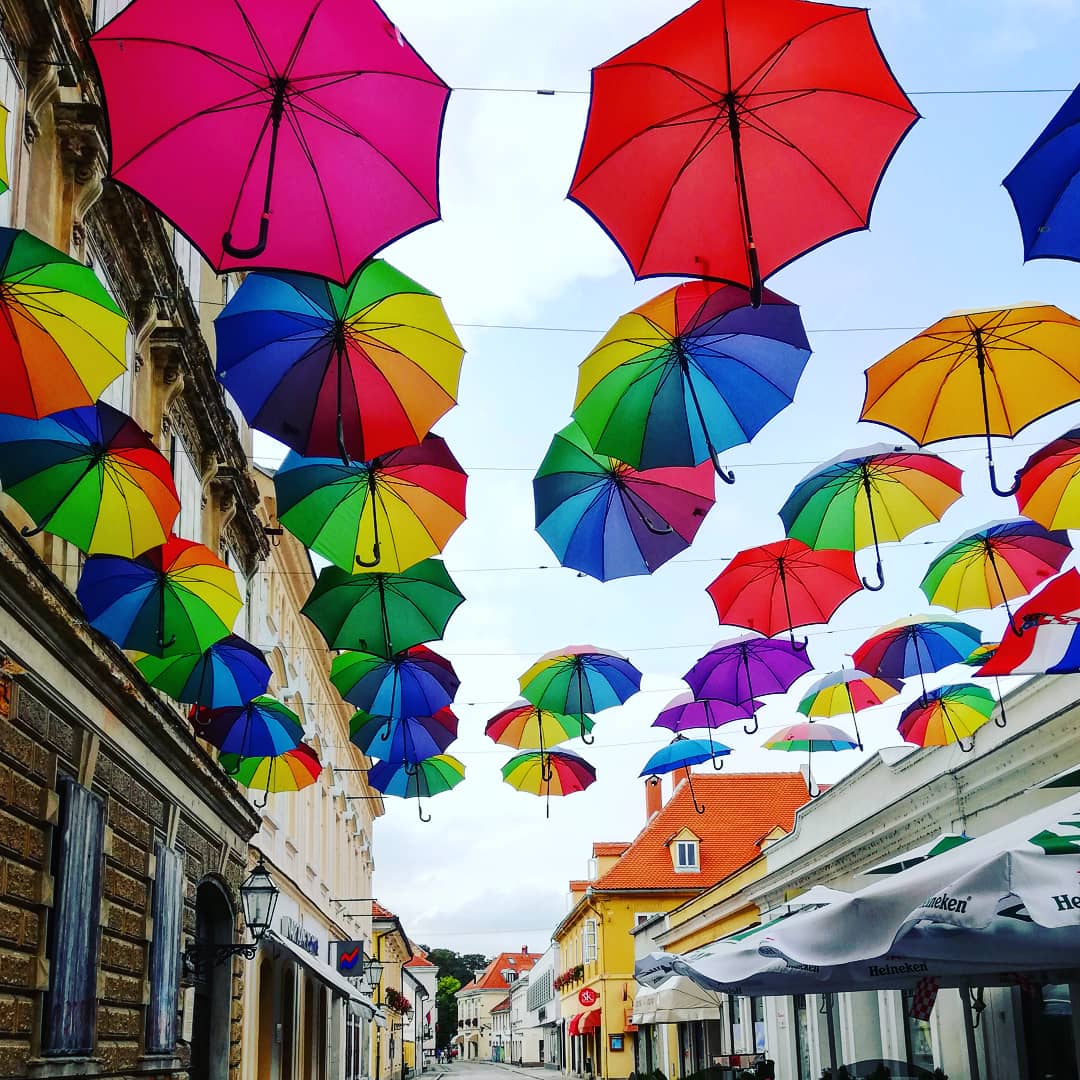
Vilim Stojkovic
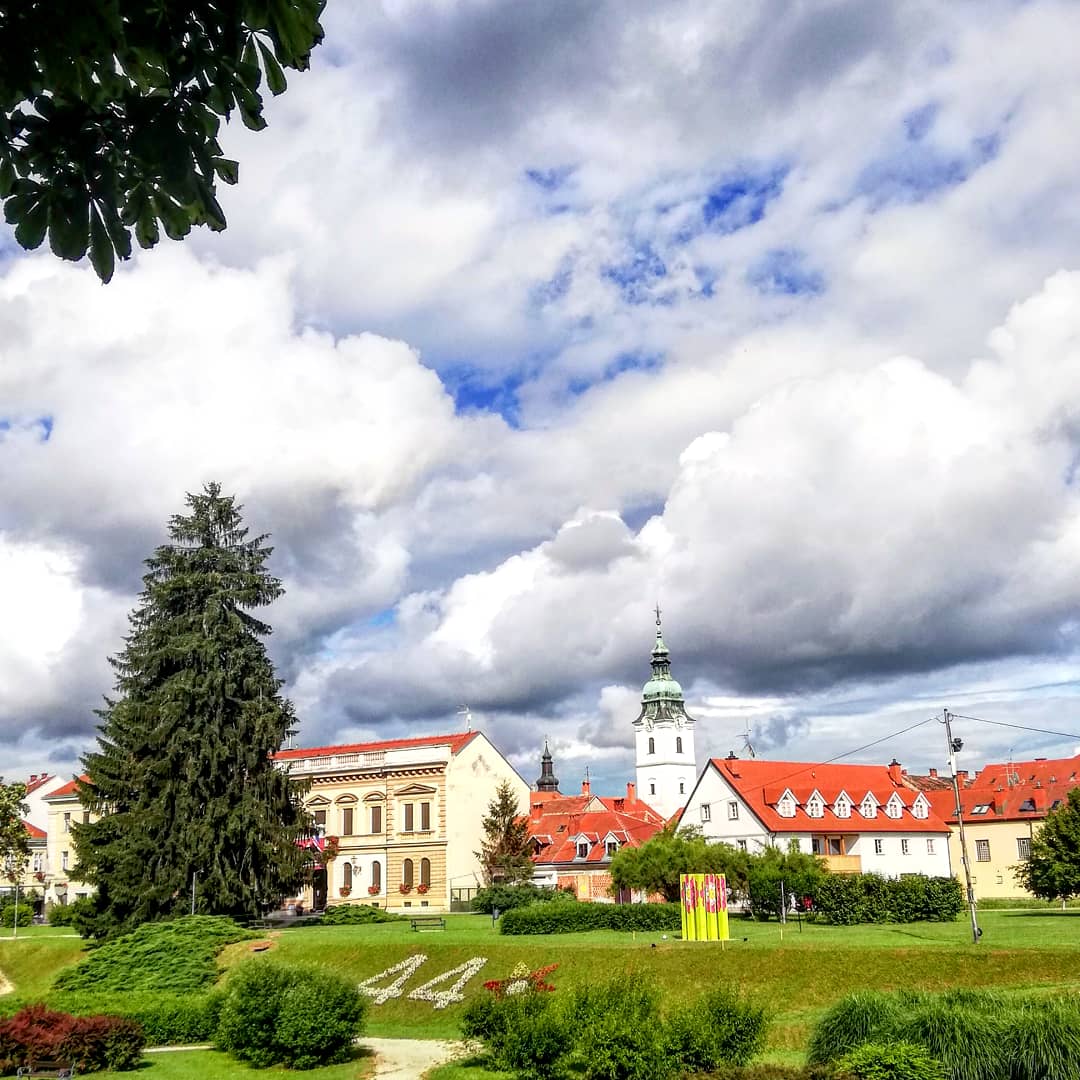
Vilim Stojkovic
Until today Karlovac is a pristine, well laid out town with varied building styles, colours, and textures. The green vistas of town are occasionally subdued by fog. During the average 78 foggy days per year, one can witness Karlovac disappearing altogether in fog when visibility is only a couple of feet far. Nevertheless, Karlovac invites visitors to spend a day, weekend, or active vacation in town and its beautiful countryside.
For more on travel in Croatia, follow TCN's dedicated page.
Aquatika Freshwater Aquarium Prepares Special Program for this Weekend
May 21, 2021 - A special program was prepared by the Aquatika Freshwater Aquarium Karlovac every day this weekend, to celebrate different but special occasions.
Turistickeprice.hr reports that, to mark the Day of the Natura 2000 ecological network, which is celebrated today, the Croatia Nature Protection Day on Saturday, May 22, and the World Turtle Day, on Sunday, May 23, the Public Institution Aquatika Freshwater Aquarium Karlovac have prepared a special program.
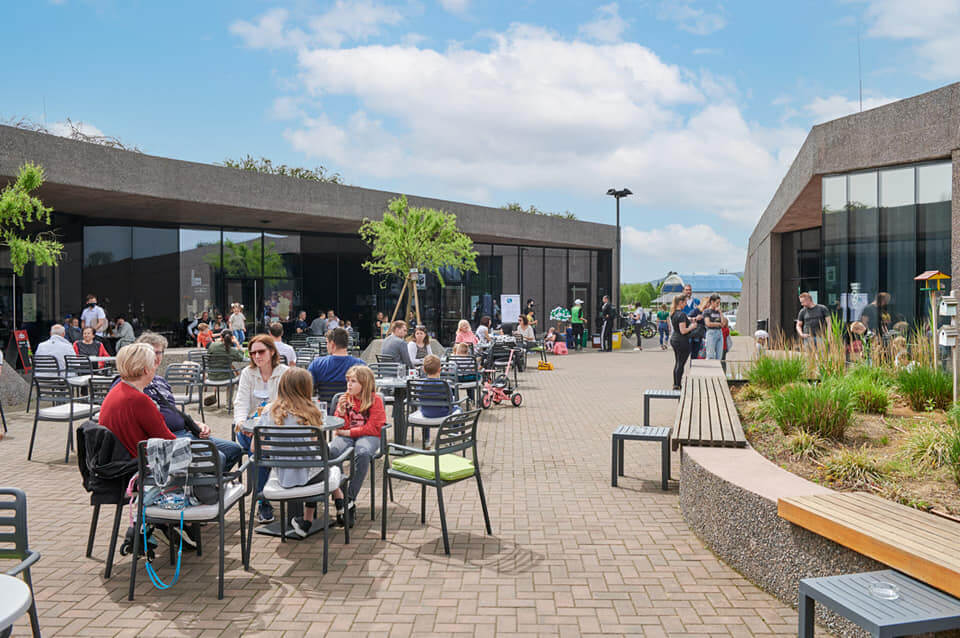
Credit: Aquatika Freshwater Aquarium Karlovac Facebook Page
Natura 2000 is an ecological network made up of areas across the European Union inhabited by animal and plant species that are endangered, vulnerable, or on the verge of extinction for various reasons. The European Union has established the Natura 2000 ecological network, and all members of the European Union are obliged to protect such endangered habitats and animal species.
The goal of the ecological network is to preserve or restore favorable conditions for more than a thousand endangered and rare species and for about 230 natural and pre-natural habitat types. This ecological network includes about 20% of the territory of the European Union, or about 27,500 areas, which makes it the largest system of preserved areas in the world. The Natura 2000 site has its own special day, and it is May 21st. On this day, in 1992, the European Habitats Directive and the LIFE Program were approved. With the Birds Directive, they form the basis for the European Natura 2000 network.
To commemorate the day the United Nations adopted the Convention on Biological Diversity (CBD) in 1992, May 22 is celebrated as International Day for Biological Diversity. All signatory countries to the Convention, including Croatia, have committed themselves to take the measures necessary for the conservation and sustainable use of biological diversity. This day is also celebrated in Croatia as Nature Protection Day.
On the Aquatika Square and on the promenade created within the project "Encounter with the River", the Karlovac Freshwater Aquarium is organizing an event as part of the "Spring in Karlovac" event. Thus, on Saturday, May 22, from 11 a.m. to 1 p.m., educational animation for children will be organized on Aquatika Square. The topic will be the biological diversity of our rivers and nature protection. On the promenade, three educators with two holograms and a stand with promotional materials will promote the ecological network Natura 2000 and educate visitors.
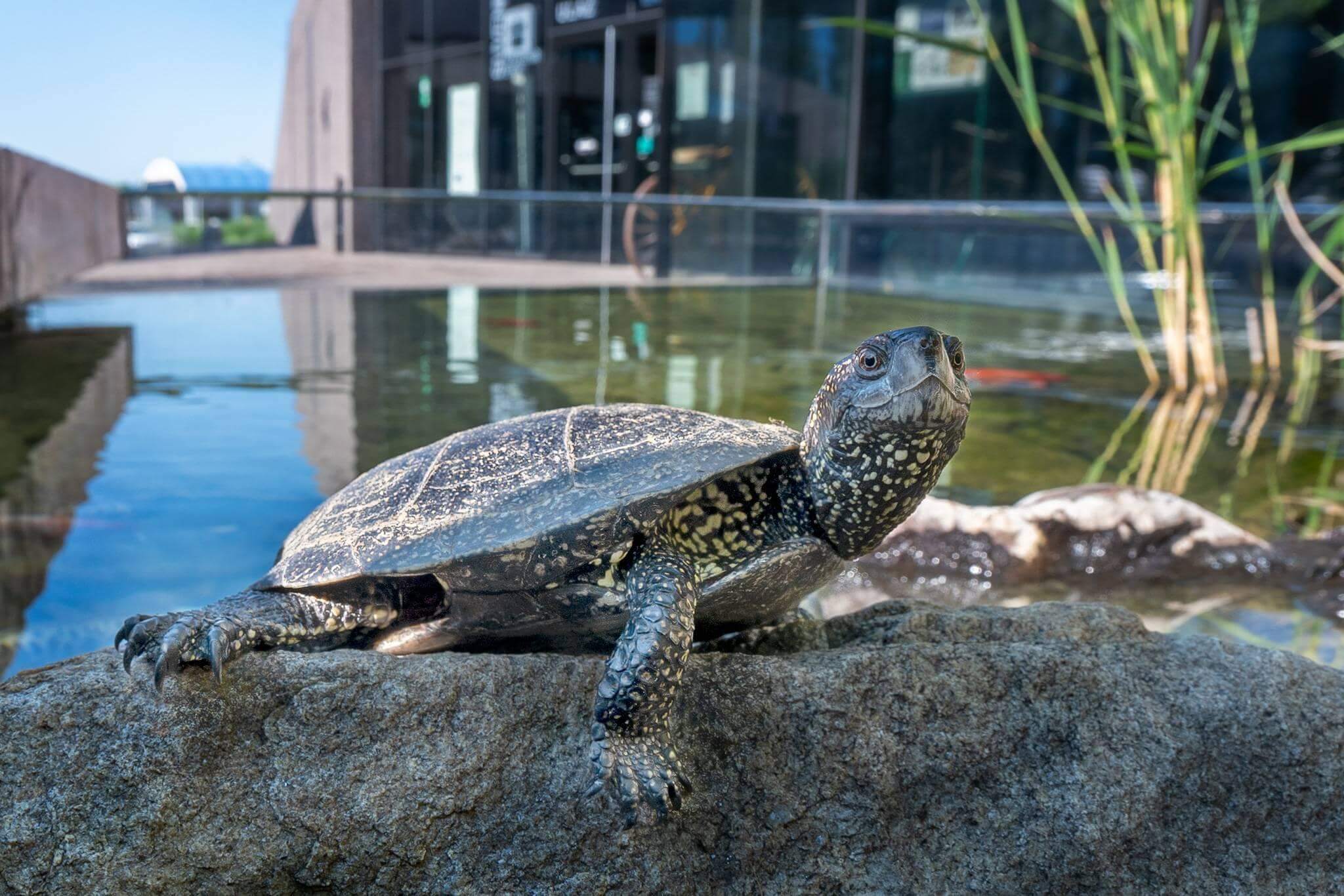
Credit: Aquatika Freshwater Aquarium Karlovac Facebook Page
Aquatika will mark another important day, World Turtle Day on Sunday. On that occasion, they will have turtle feeding with education about their life habits, as well as the artistic expression on the topic of turtles.
For more on travel in Croatia, follow TCN's dedicated page.
Karlovac City of Trees: 10, 000 Trees Breathe Life Into City Centre
January 21, 2021 – By fiercely protecting their natural residents, Karlovac city of trees improves the quality of life for all – the trees keep the air clean, reduce the temperature and noise and serve as a habitat for city centre wildlife
The parks we find within cities can often be the very best parts. As a visitor, their memory can rival the grandest architecture you take in. London and Zagreb are two perfect examples. Who couldn't say that the stroll between Glavni kolodvor (main train station) and Ban Jelačić Square via Tomislavac and Zrinjevac isn't year-round one of the most gorgeous parts of the Croatian capital?
Though lying only 50 kilometres to the south-west of Zagreb, in the city of Karlovac they have taken a different approach. Instead of building parks within the city, they've built a city within parks, or so they like to say. And, walking down its tree-lined promenades, shaded by the riverside or through its immaculate rolling parkland, who could disagree? This is a city within a park. Also, it is Karlovac city of trees. One of Karlovac's famous city centre parks © 11raccoon1
One of Karlovac's famous city centre parks © 11raccoon1
Karlovac city of trees prizes its green assets more than most. They never cut down their trees unless its health poses a direct risk to property or person. Any new builds or city expansion must happen around the longstanding green residents. Local by-laws state that for any tree removed from within the city centre, another must be planted in its place.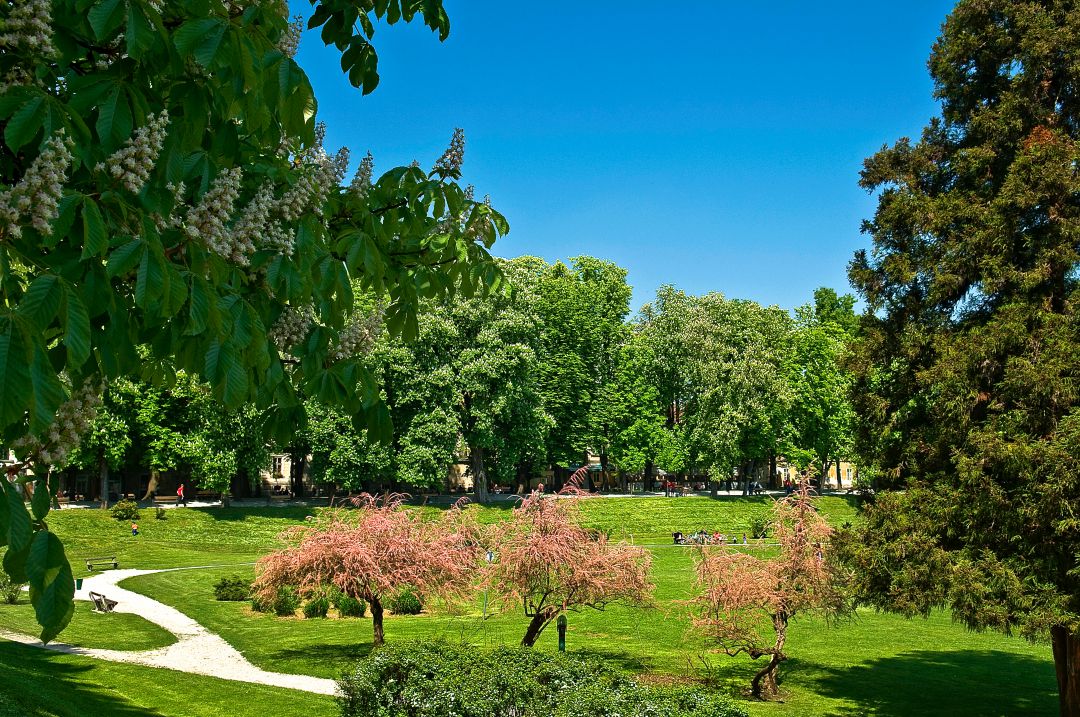 © Visit Karlovac
© Visit Karlovac
In addition to the public institution Natura Viva, which takes care of the parks in Karlovac city of trees, and the company Zelenilo, which takes care of public green areas, the Commission for the Protection and Arrangement of Green Areas of the City of Karlovac has been established. The city recognises that its green areas, in particular its trees, are not only there for their beauty – they positively affect air quality, reduce temperature and reduce noise in the city. They are also the habitat of the city's animal residents. The quality of life of residents in Karlovac city of trees is dependant on these natural assets.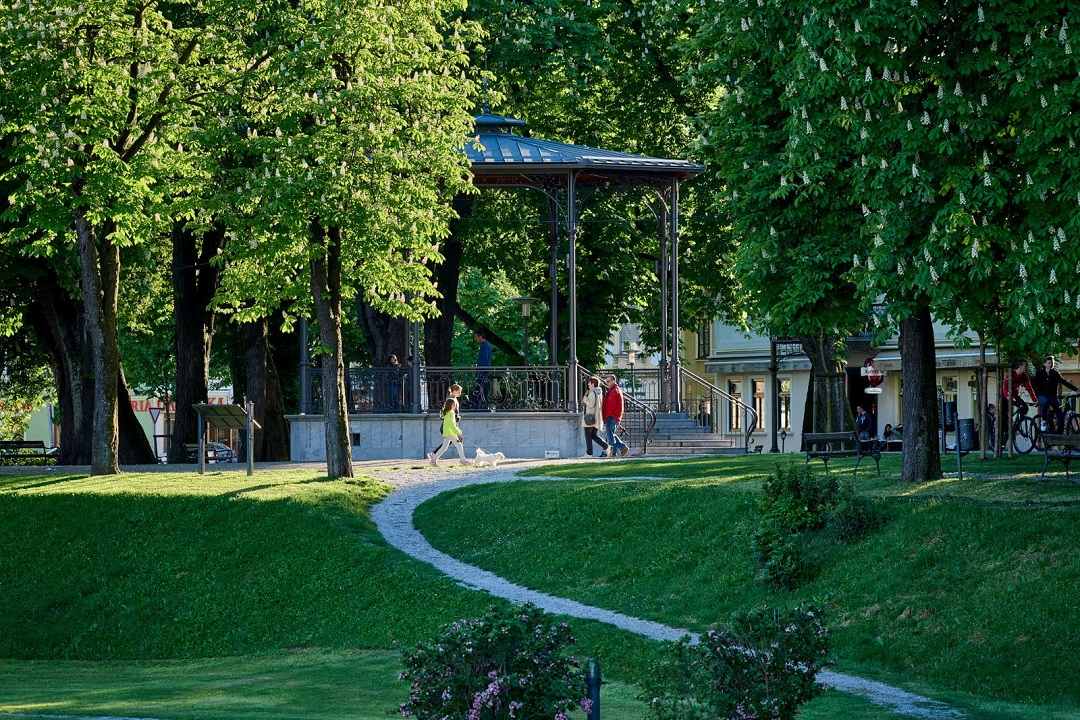 © Visit Karlovac
© Visit Karlovac
So seriously do they take the responsibility of looking after its trees, that Zelenilo maintains a map of the city which details every single tree that exists within the city centre. As noted in a news item from yesterday from the lokalni.hr portal, this map, or cadastre, has just been updated. Karlovac city of trees now proudly counts 10, 000 trees as valuable residents within its city centre.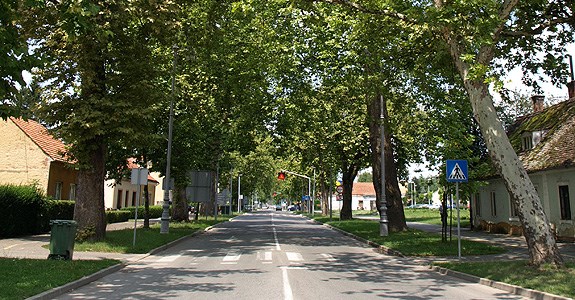 © Grad Karlovac
© Grad Karlovac
In order to reach this high figure, Zelenilo detailed that 144 new trees were planted in the city last year and another 147 trees in the Mekušje business zone. In 2019, 242 trees were planted, 95 in the year before, 119 in 2017, 210 in 2016, 162 in 2015, and as many as 200 in 2014.
Continental Croatia Trains: Inland Opens Up With Green Travel
October 3, 2020 - With charter airlines in a state of flux and Croatia Railways beginning a renewal of their fleet in Slavonia, are continental Croatia trains the eco-friendly and best way to unlock the inland's amazing potential?
Everything changes. Nothing stays the same. Even before 2020 arrived, lifestyles and trends were headed in new directions. Eco-tourism and agro-tourism were two of the fastest-growing areas within the travel sector, this behaviour change a response to concerns about the environment. And nowhere in the country stands better poised to take advantage of this interest than continental Croatia.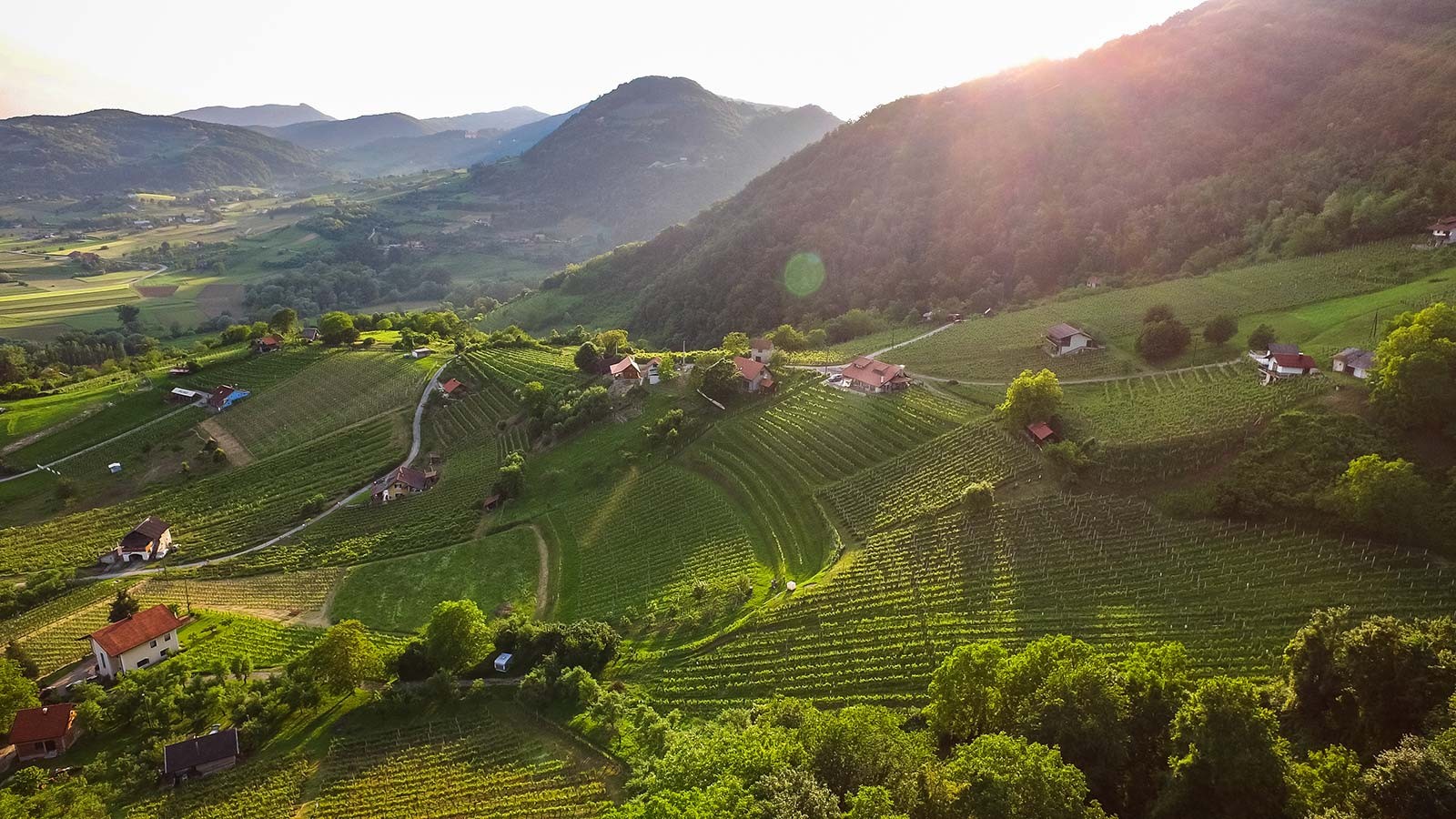 Impossibly pretty Zagorje - the region lies just north of Zagreb and is accessible by continental Croatia trains © Ivo Biocina / Croatia National Tourist Board
Impossibly pretty Zagorje - the region lies just north of Zagreb and is accessible by continental Croatia trains © Ivo Biocina / Croatia National Tourist Board
From the impossibly pretty hills of Zagorje, the peaceful rivers of Karlovac county and the hidden vineyards that surround the capital Zagreb to the vast Pannonian flatlands that stretch to Slavonia, Baranya, Vukovar-Srijem and beyond, the varied topography of continental Croatia is wild, exciting and - by many - wholly undiscovered.
This is land where agriculture and nature thrive side by side, where the stresses of modern-day existence ebb away as you readjust to a way of life that would look mostly familiar to the people who lived here centuries ago. These are places where you can truly be at one with yourself and with your surroundings. In continental Croatia, you often find yourself in an environment that is both timeless and traditional, yet wholly contemporary in regards to its ecological aspirations. And you're never far away from an exciting city environment that you can dip into on a whim – not just Zagreb, but Osijek, Slavonski Brod, Karlovac, Sisak and Varaždin too.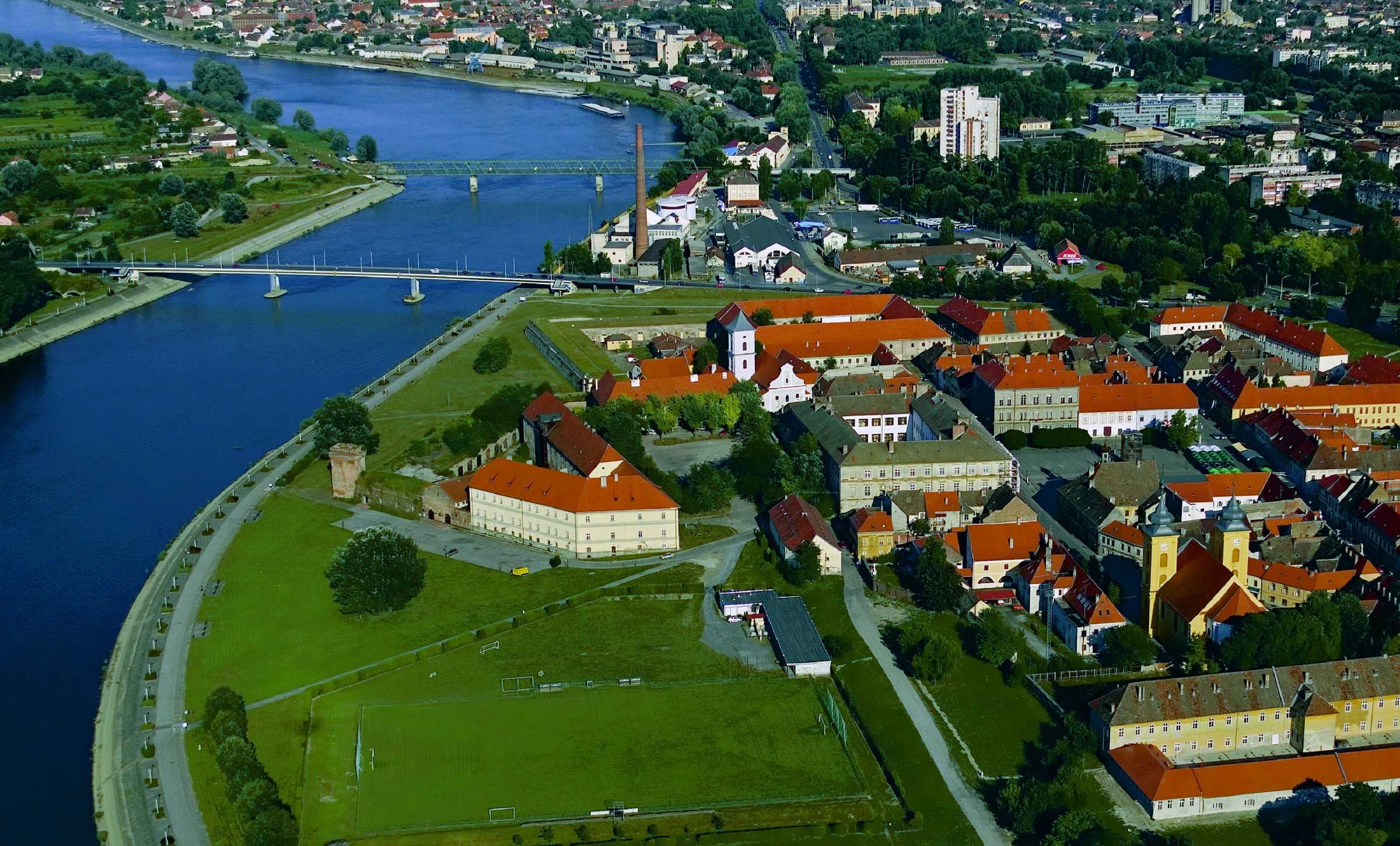 To those who really know and love Croatia, Osijek is simply unmissable. It is both the capital of and the doorway to Slavonia and Baranya and should be more accessible by continental Croatia trains. Sadly, international transportation links to the city by air are also quite poor. Improvements in accessibility to Slavonia and Baranya by rail and road are imminent © Romulić & Stojčić
To those who really know and love Croatia, Osijek is simply unmissable. It is both the capital of and the doorway to Slavonia and Baranya and should be more accessible by continental Croatia trains. Sadly, international transportation links to the city by air are also quite poor. Improvements in accessibility to Slavonia and Baranya by rail and road are imminent © Romulić & Stojčić
Unlocking the incredible potential of continental Croatia relies on getting the message out there and facilitating travel to these regions
In recent TCN features we have detailed that motorways within Croatia are among the best in Europe - once you're inside Croatia, travelling by car (or bus) between the regions couldn't be easier. We have also seen evidence of the huge interest in travelling here by rail and using continental Croatia trains.
Of all the modern methods of long-distance travel, rail is by far the most eco-friendly. What better way to begin an environmentally friendly holiday than by arriving on continental Croatia trains? When the country wisely decided to prioritise its internal motorway system, a modern and fast inter-regional rail network was put on the back burner. Nowhere suffers greater from this decision than continental Croatia.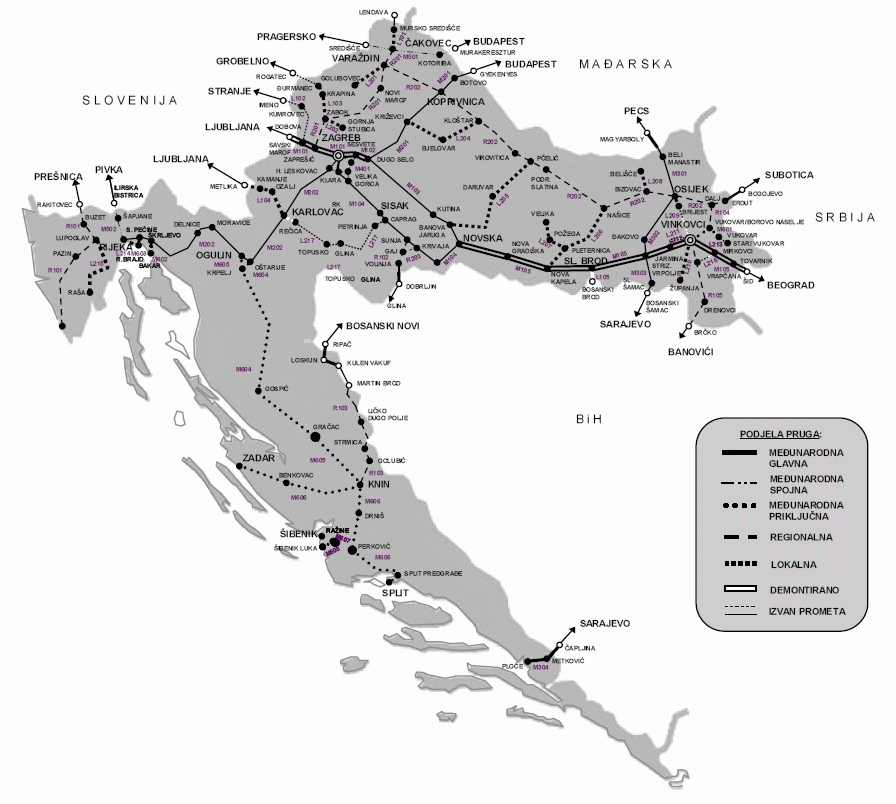 The Croatian rail network © Croatian Official Document uploaded to Wikipedia by Epepe
The Croatian rail network © Croatian Official Document uploaded to Wikipedia by Epepe
The only high-speed line that currently exists in Croatia links Rijeka to Budapest, via Zagreb and Koprivnica. Planned improvements hope to cut journey times between Zagreb and its nearest coastal city to an hour. Same as it ever was - Rijeka was the first Croatian city to be connected internationally by rail. That line also ran into the heart of Austro-Hungary and facilitated upper-class travel to places like Opatija. But does it best benefit the country to invest in more links to the coast or in continental Croatia trains? Well, the inland is not being ignored. Upgrades are being made to continental Croatia trains. This impressive beast actually services the country's coast. But would more investment in the continental Croatia trains network better service more people and help unlock the inland to tourists? Around 70% of the country's inhabitants live in continental Croatia © HŽPP
This impressive beast actually services the country's coast. But would more investment in the continental Croatia trains network better service more people and help unlock the inland to tourists? Around 70% of the country's inhabitants live in continental Croatia © HŽPP
The rail link between Zagreb and Slavonski Brod is so historic that it was once part of the four routes of the Orient Express. It has been maintained to a standard where you can make a relatively quick journey from the capital to Vinkovci via Slavonski Brod. The same cannot be said for rail travel to Osijek, the access point to Baranya and much more. So slow is the connection between Osijek and Zagreb that it has been possible over recent times to reach the Slavonian capital quicker by taking the train to Vinkovci, then the bus to Osijek, rather than travelling direct by rail. Osijek train station. A renovation to the building is planned for the near future © Romulić & Stojčić
Osijek train station. A renovation to the building is planned for the near future © Romulić & Stojčić
However, in February this year, Croatian Railways introduced four direct daily lines between Slavonski Brod and Osijek. And there will be a new tilting train line that will run between Zagreb to Osijek on Friday afternoon and from Osijek to Zagreb on Sunday afternoon, facilitating student travel. On October 15, the first low-floor train will run between Osijek and Vinkovci as an additional part of the renewal of their continental Croatia trains fleet in Slavonia. The welcome return of Croatia's second-oldest international rail line - linking Osijek to Pécs in Hungary, via Beli Manastir and Baranya - was introduced in late 2018.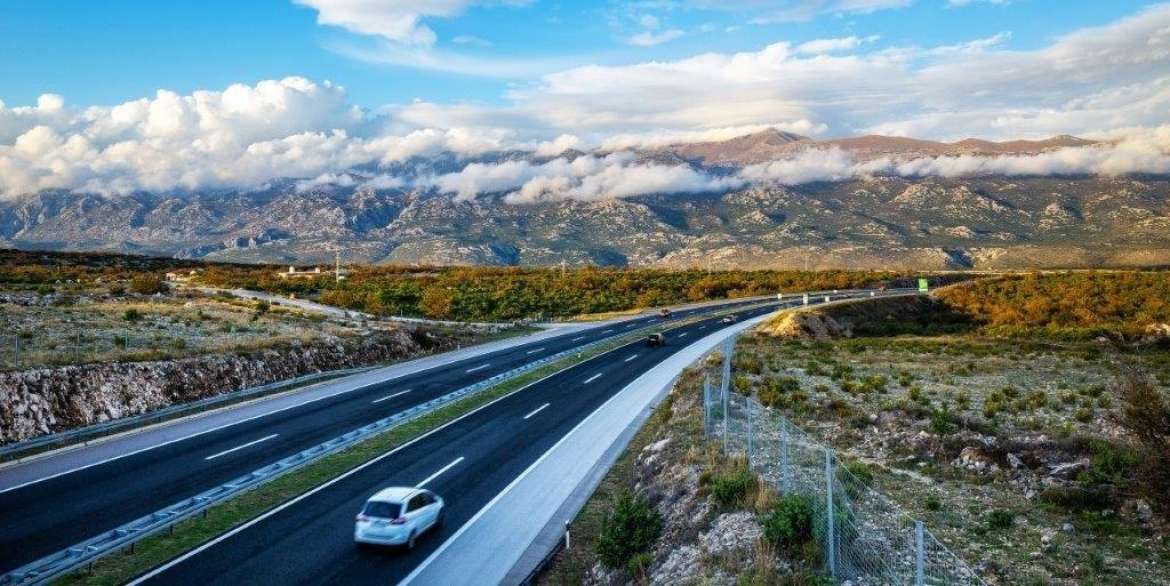 A motorway stretch between Metković and Dubrovnik, integrating the Pelješac bridge and the Croatian segment of the European corridor are the final big remaining projects in a three-decade-long undertaking to give Croatia one of the best motorway networks in Europe. Should Croatia's rail network be next? © Hrvatske Autoceste
A motorway stretch between Metković and Dubrovnik, integrating the Pelješac bridge and the Croatian segment of the European corridor are the final big remaining projects in a three-decade-long undertaking to give Croatia one of the best motorway networks in Europe. Should Croatia's rail network be next? © Hrvatske Autoceste
Access to Slavonia and Baranya will also be massively facilitated upon completion of the European corridor, which will connect North Europe to the Adriatic. Starting in Budapest, it necessitates the building of a bridge near Beli Manastir. Thereafter the motorway will pass by Osijek, connect to the Zagreb-Slavonia motorway near Lipovac, then pass through Bosnia and its capital Sarajevo and on to Ploče.
The removal of budget airline flights to the airport in Osijek remains a hindrance to attracting many international visitors to Slavonia and Baranya. However, with charter airlines facing the greatest uncertainty of all modes of transport at the current time, though their return is a must, it is perhaps now an ambition that should remain more long term. For the immediate future, improvements to rail travel look to be a brilliant way of opening up not only Slavonia, Baranya and Vukovar-Srijem, but also an eco-friendly access point capable of serving the whole of untapped continental Croatia.
For the latest travel info, bookmark our main travel info article, which is updated daily.
Read the Croatian Travel Update in your language - now available in 24 languages
Nikola Tesla Returns To Gospić After 30 Years
August 22, 2020 – After being destroyed in the war, the famous statue of genius Nikola Tesla will finally return to his home town
Following a 30 year absence, the famous statue of Nikola Tesla will be returned to his home town of Gospić. The original Tesla monument that once stood in the central town square, created by Croatian sculptor Frano Kršinić, was blown up during the 1990s Homeland War.
Gospić mayor Karlo Starčević today signed a contract approving construction works for the renovation of the square in front of the Gospić Culture Information Centre, where the Nikola Tesla statue will be placed. The contract is worth about HRK 1.8 million.
The location where the monument will stand is planned as a quiet area with several benches and gravel footpaths. The statue is an exact replica of the one previously lost to Gospić. Copies of this statue currently reside outside the School of Electrical Engineering section of Belgrade University and on the American side of Niagara Falls (main picture).
Nikola Tesla is honoured on both sides of Niagara Falls. This is his statue on the Canadian side © Milan Suvajac
An inventor and hugely innovative engineer, Nikola Tesla is best known for pioneering the alternating current (AC) electricity supply system. AC enables electricity to be provided safely to every home, street and business today. Tesla was born in 1856 in the village of Smiljan, in Lika, just six kilometres from Gospić.
In 1862, his family moved to Gospić where Tesla's father worked as an Orthodox parish priest. Nikola Tesla himself was supposed to follow his father and his mother's father into the Orthodox priesthood. Thankfully, he did not. In 1870, Nikola Tesla moved to nearby Karlovac to attend the Higher Real Gymnasium. A new Nikola Tesla exhibition centre is currently being built there, next door to the place of his former studies.
After Karlovac, Nikola Tesla continued his studies in Austria, and then spent some time teaching and working in Hungary. He eventually got a job working for Thomas Edison's company in Paris. While there, his incredibly innovative work was soon noticed and he was invited to go and work for the company in America.
Nikola Tesla, pictured before his work in America © State Archives
Thomas Edison - also a pioneering inventor - is frequently cited as one of the most innovative figures in the development of electricity supply. However, Edison was adamant that direct current (DC) would be the best way to distribute electricity. The DC system he championed was in direct competition to that proposed by his one-time employee, Tesla. Despite Edison's wealth and power, the DC system he fought hard to impose proved to be impractical and unsafe. Instead, the AC distribution design, perfected by Tesla, became the standard supply system that the world uses today.
Nikola Tesla stayed in America for the rest of his life and continued to create countless pioneering inventions. He worked within the fields of early x-rays, wireless power supply, electromagnetic radiation and radio waves, before his death in 1943. In the years since he died, interest in the enigmatic Nikola Tesla has only grown.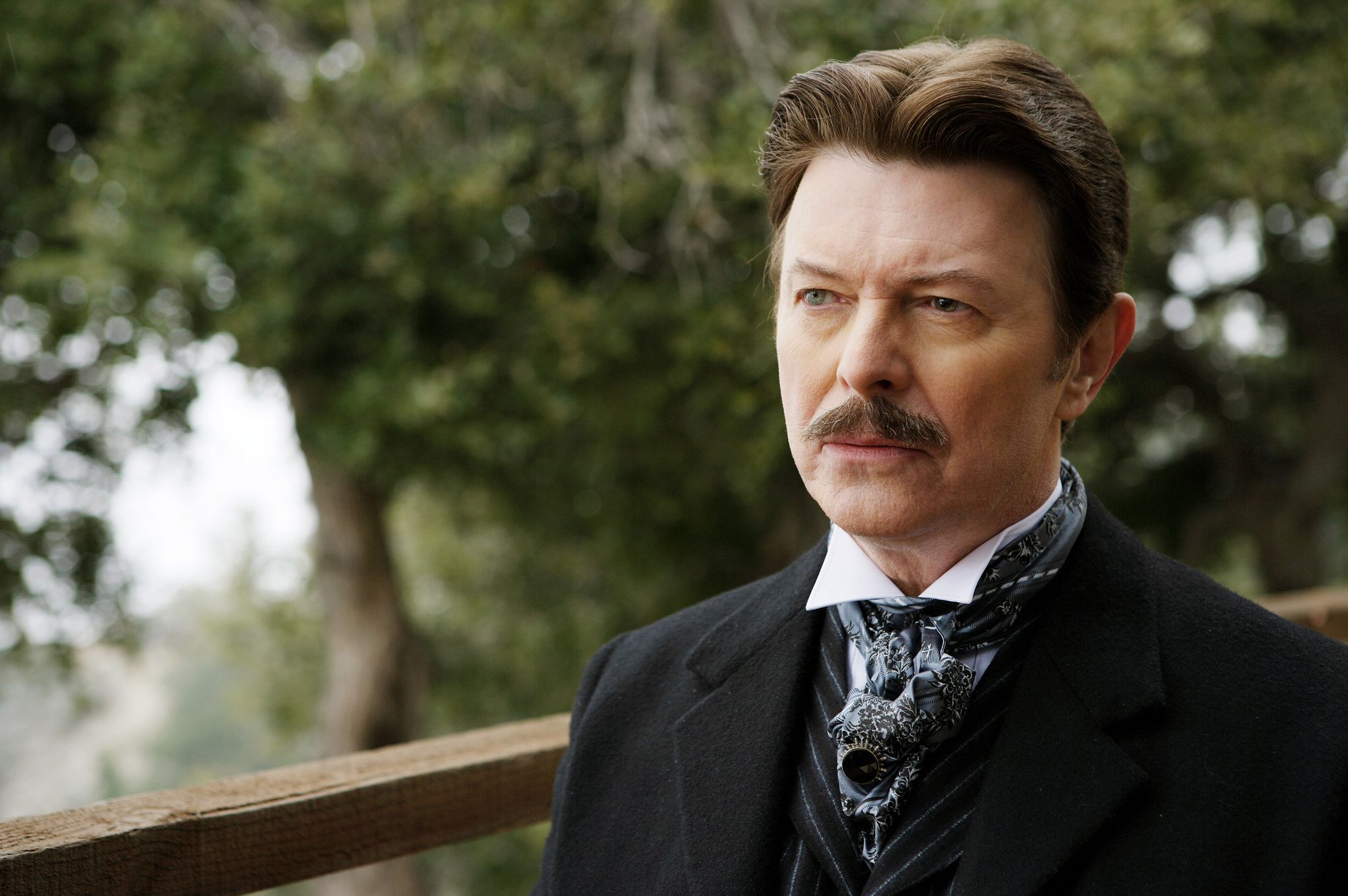
David Bowie playing Nikola Tesla in Christoper Nolan's 2006 movie The Prestige © Warner Brothers
A mystique continues to surround him, not least because many of his wondrous ideas remain unrealised. Nikola Tesla has been portrayed in film by Nicholas Hoult and David Bowie (the latter, famously, in Christopher Nolan's The Prestige). The national airport in Belgrade, Serbia is named after him, as is Serbia's largest power plant. In Croatia, over 130 streets are named after Nikola Tesla.
Aquatika Museum from Karlovac Joins Global Network of Water Museums
The freshwater aquarium Aquatika museum from Karlovac has now joined the Global Network of Water Museums, thus becoming a part of the family of the world's most famous museums and interpretation centres of this kind, hrturizam.hr writes.
Aquatika has managed to fill an extremely important educational function, as well as succeed in holding remarkable importance for the preservation of the underwater world of Croatian rivers and lakes. Now that importance has been recognised by the leading actors on the global level, which plays the key role in educating the public and raising the awareness on the various questions regarding freshwater worldwide.
Director of the Aquatika museum, Margarita Karuškić Kulaš, said: "Museums, interpretation centres and similar institutions play a key role today in communicating the values of the heritage of water, the better understanding of the water crisis of today and possible solutions to it. We are extremely proud that Aquatika has become a part of this prestigious group, as well as the worldwide initiative on the sustainable use of waters and the protection of life in the water.
The Global Network of Water Museums was founded as an initiative to create synergies within UNESCO's international hydrological program. The network aims to improve the coordination of the communication and educational activities of the museums and similar institutions, focused on the topic of water. In addition to that, the association deals with the questions and challenges caused by climate change, such as the continually worsening pollution of the water, resource depletion, glaciers' melting, the increasing frequency of flooding, and the maintaining of natural habitats.
This membership is yet another acknowledgement of the excellent work being done in Karlovac's Aquatika, so you should consider making a detour and visiting this amazing museum, located by one of four rivers in Karlovac, the amazing Korana River. Read more about the museum here, or on their Facebook page.
New Project Honouring Nikola Tesla Presented in Karlovac
Something new for Karlovac County as the House of Nikola Tesla project is presented.
As Poslovni Dnevnik writes on the 26th of October, 2018, Karlovac County is preparing to create something that will highlight the fact that Nikola Tesla himself completed his high school education in Karlovac, and thus the county will finally embrace him proudly as a former citizen.
The location for the project's detailed presentation was therefore far from chosen by chance, since Nikola Tesla completed his formal education at the Karlovac Gymnasium, and on the occasion of the presentation, Karlovac Mayor Damir Mandić stated: "Here, Nikola became Tesla".
The content of the future House of Nikola Tesla will be closely linked with Karlovac Gymnasium, its contents will be varied, both in an architectural and conceptual sense, and these features have been conceived to become part of the educational facility itself.
The House of Nikola Tesla project was initially submitted by Karlovac County back on the 27th of October, 2017, at the MRRFEU "Program for the preparation of local development projects eligible for funding from ESI funds" tender. The project was of course approved, and a co-financing agreement was signed on May the 21st, 2018, amounting to 430,000 kuna.
The contract for concept interpretation has been signed with REAL Group d.o.o., and the services consist of the creation of an initial project program, a preliminary design project, a design project for the design of the future House of Nikola Tesla, the design of the exhibition and its functional space(s), the design of its contents, a business plan, and promotion. The contract value amounts to 236.250 kuna.
The contract for the service of design documentation (for both the main and executive project) for the environmental reconstruction and extension of the Rakovac 6 residential building was signed with the company POP-AP from Karlovac.
The contract documentation consists of: a preliminary project for obtaining location permits, a project for the demolition of the constructive elements of the building, the main project for obtaining special conditions and confirmation of the main project, the building permit and the execution project with the cost of the works. The contract's value stands at a handsome 246,204.90 kuna.
The funds for the realisation of these contracts were provided by Karlovac County itself.
The very successful public presentation of the project was held by representatives of the REAL Group and a team of young local architects from Karlovac's own POP-AP company, and the vision of the project was met with nothing less than delight from all of the participants who attended.
The initiator and main advocate of this project, Deputy Prefect Martina Furdek Hajdin, made no effort to hide her joy with what she saw, and emphasised that Karlovac is now set to get yet more valuable multifunctional content owing to this praiseworthy project, and with it appropriately and proudly embrace the one and only Nikola Tesla as a former fellow citizen of Karlovac.
Works on the project are expected to begin in 2019.
You can follow more news about the main who gave the world so much heremainYou can follow more news about the main who gave the world so much here.
Festival Of Light and Water: Tesla's Creative Triptych
The energy package covering Zagreb-Karlovac-Ozalj presented as a new tourist product intended for domestic and foreign visitors.


